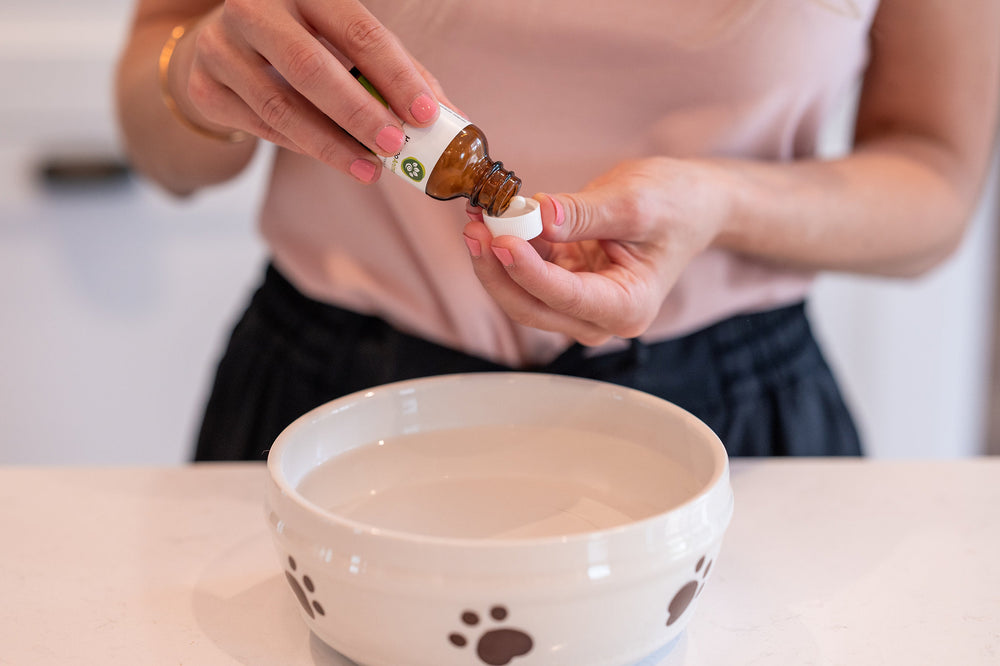Vet-Approved Natural Remedies for Low Blood Sugar in Dogs
Do you think your dog has low blood sugar? Sudden drops in blood sugar levels can be caused by many factors and are often emergencies. In this article, I'll cover everything you need to know about hypoglycemia in dogs.
What is Hypoglycemia in Dogs?

Hypoglycemia in dogs, also known as low blood sugar, is defined as a blood glucose level below 60 mg/dL (3.33 mmol/L).
This condition, sometimes referred to as a "hypoglycemic crisis," can cause neurological signs such as weakness, disorientation, and tremors, requiring immediate veterinary attention. In severe cases, extremely low blood glucose can lead to seizures and shock.
To understand the symptoms and treatment of dog hypoglycemia, it’s crucial to first grasp the significance of blood glucose in the body.
Glucose is a type of carbohydrate that provides energy for the body. When blood glucose levels are high, the pancreas secretes insulin, which helps lower blood glucose levels by storing excess glucose as glycogen and decreasing glucose absorption from the digestive tract.
When hypoglycemia occurs, the body releases hormones like glucagon and adrenaline to elevate blood glucose levels. However, in severe cases, the body might struggle to produce sufficient glucose rapidly enough. Given glucose's critical role in brain function, dogs with low blood sugar can exhibit neurological signs such as staggered walking, tremors, seizures, and lethargy.
Low blood glucose levels in puppies

It's important to be aware that puppies and kittens can develop low blood sugar rapidly, which can be life-threatening.
This vulnerability arises because they cannot store glucose effectively in their muscles as glycogen reserves. Additionally, puppies and kittens have lower body fat stores and immature liver enzymes, both of which are crucial for releasing glucose into the blood.
Due to these factors, they are more prone to hypoglycemic episodes. Notably, puppies considered "runts" or those that don't eat frequently are at the highest risk of experiencing "fading puppy syndrome," a life-threatening condition.
What Causes Canine Hypoglycemia?

Are you curious about what causes blood sugar levels to drop in dogs and whether it's a common issue veterinarians encounter?
Acute hypoglycemia almost always presents as an emergency and should never be handled at home, as it can be fatal. Common causes include insulin overdose, severe illness, or ingestion of toxic substances. Chronic hypoglycemia, on the other hand, is more challenging to detect because dogs often show no symptoms. It may be related to underlying conditions like severe liver disease, diabetes mellitus, or hormonal imbalances.
When managing hypoglycemia in dogs, it’s crucial to identify the underlying cause of the low blood sugar levels. This is essential for preventing future drops. If you suspect your dog has hypoglycemia, contact your veterinarian immediately for guidance and treatment options.
Too much insulin in a dog's body can be a factor.
When a dog is exposed to too much insulin, they are at risk of developing hypoglycemia. Here are a few scenarios in which this might occur:
- Diabetic dogs: Iatrogenic insulin overdose is perhaps the most common cause of low blood sugar in dogs. This happens when there is a significant increase in the insulin dose or when doses overlap too closely.
- Insulinoma: An insulinoma is a malignant tumor in the pancreas that secretes excessive amounts of insulin, leading to hypoglycemia.
- Xylitol toxicity: Xylitol, an artificial sweetener found in sugar-free gum and other diet products, can cause hypoglycemia in dogs. In cases of xylitol ingestion, it stimulates insulin secretion within 30 to 60 minutes.
A dog's body is using too much glucose.

Heatstroke, sepsis, and shock are just a few conditions that can lead to a hypoglycemic episode. These conditions cause the body to enter a hypermetabolic state, which leads to increased glucose utilization and subsequent hypoglycemia.
Similarly, certain cancers, such as hemangiosarcoma, oral melanoma, and lymphoma, can also induce hypoglycemia in dogs. These cancers consume excessive amounts of glucose and release an insulin-like peptide, which further lowers blood glucose levels.
A dog's body is not producing/releasing enough glucose.
Toy dog breeds, young puppies, and dogs with liver disease are susceptible to low blood sugar levels. Puppies are particularly vulnerable due to their limited sugar storage in muscles, which can lead to fading puppy syndrome.
Similarly, small toy breed dogs are at risk because they have low body fat. Additionally, dogs with liver disease or liver failure can experience low blood sugar as they do not store sugar properly.
Hypoglycemia in Dogs Symptoms
The clinical symptoms of hypoglycemia in dogs can be silent, meaning that if there's only a mild drop in blood glucose levels, your dog won't show any clinical signs or symptoms. However, if there's a substantial drop in blood glucose levels, dogs can experience various symptoms, including:
- Ataxia (stumbling while walking)
- Blindness
- Sudden weakness
- Vomiting and diarrhea
- Seizures
- Shock
How is Hypoglycemia in Dogs Diagnosed?

1. Physical examination findings/history
The veterinarian will start by conducting a complete physical examination. It's important to note that dogs with chronic hypoglycemia may not show any symptoms because their bodies have adapted to low blood sugar levels over time.
However, dogs with sudden and severe hypoglycemia are more likely to display symptoms such as weakness, blindness, reduced alertness, rapid breathing, and a slow heart rate.
2. Blood testing
If your veterinarian suspects low blood sugar, they will recommend a comprehensive blood chemistry test. This test not only checks glucose levels but also assesses whether other organs are involved in causing hypoglycemia in the dog.
3. Blood glucose curve
For pets with diabetes, episodes of hypoglycemia may occur during a blood glucose curve test. This test involves taking blood samples at regular intervals (every 60 to 120 minutes) after insulin administration to monitor blood glucose levels over a 24-hour period.
How to Treat Low Blood Sugar in Dogs at Home

If you think your dog or cat is experiencing a hypoglycemic episode, it is crucial to take them to the nearest emergency veterinarian as soon as possible. Acute hypoglycemia, if left untreated, can cause severe neurological damage (brain damage) and is life-threatening.
However, if you’re in an emergency situation, here are a few things you can do to treat low blood sugar levels at home:
If you suspect your dog is having a hypoglycemic episode, apply any of the following to their gums and bring them immediately to the nearest veterinary hospital.
- Karo syrup: Light corn syrup, which I always use in emergencies until medical attention can be sought.
- Maple syrup: Has a high glucose concentration and usually contains a lot of corn syrup.
- Honey: An all-natural sweet syrup that can quickly raise blood glucose levels.
- Small nutritious meal: If you check your dog's blood glucose and find it is low, you can give them a small, rich meal. I recommend cooked chicken breast and white rice.
Zumalka's Immunopet is Designed to Help Bolster Your Pet's Immune System

While treating acute hypoglycemia requires veterinary intervention, there are many natural, homeopathic remedies available at Zumalka that boost health and support the immune system.
IMMUNOPET is one such product formulated specifically to enhance your pet's immune system gently and holistically. This product contains natural ingredients like Cleaver Leaves (Galium aparine), which act as an immune tonic to support and increase lymphatic drainage. It also includes Tabebuia heptaphylla, known for its antibacterial and antioxidative effects.
Zumalka's IMMUNOPET is a must-have for any pet parent looking to keep their pooch healthy and happy. This blend of natural ingredients helps fortify the immune system, promoting overall well-being and vitality in pets.
My Experience with a Hypoglycemic Episode…

Earlier this year, a client rushed their cat to my veterinary hospital in a state of near panic. The cat, almost comatose, had just suffered a seizure. The owner mentioned that the cat was suffering from diabetes mellitus and had received its usual insulin dose that morning.
I immediately conducted a blood glucose test.
Upon conducting a spot blood glucose test, I discovered the cat was experiencing hypoglycemia, the likely cause of the seizure. Hypoglycemia in diabetic cats can be life-threatening, so I quickly administered an IV drip of dextrose and treated the seizure with diazepam.
Why would a diabetic cat, treated with insulin for high blood sugar, suddenly have a hypoglycemic episode? The answer lies in the phenomenon of diabetic remission, where a cat’s insulin needs can significantly decrease or even disappear.
Without regular monitoring, insulin doses that were once necessary can become excessive, leading to dangerous drops in blood sugar levels.
This case underscores the critical importance of regular veterinary visits to monitor a diabetic cat’s condition. A fructosamine blood test, which measures the average blood glucose concentration over a few weeks, is essential for adjusting insulin doses appropriately.
Unfortunately, in this case, the owner had missed the last few blood tests and continued administering insulin based on outdated information. The result was a severe hypoglycemic episode caused by an insulin overdose.
This incident serves as a vital reminder: always keep up with your pet’s veterinary appointments and blood tests to ensure their treatment remains safe and effective. Regular monitoring can prevent emergencies and ensure a better quality of life for your diabetic pet.
How is Hypoglycemia in Dogs (or Cats) Treated in the Veterinary Clinic?

In severe cases of hypoglycemia in dogs or cats, the primary treatment involves administering IV dextrose, a form of sugar that helps restore blood glucose levels rapidly. However, even with this intervention, patients may continue to experience intermittent seizures. In such instances, veterinarians often administer anti-epileptic drugs, such as phenobarbital or diazepam, to control seizure activity.
Additionally, to manage suspected or present cerebral edema and reduce brain pressure, the veterinarian may use mannitol or hypertonic saline. These treatments are crucial for stabilizing the patient and preventing further complications.
Once the dog or cat is stable and awake, the veterinarian will develop a nutrition plan aimed at maintaining consistent blood sugar levels. This plan is essential for preventing future hypoglycemic episodes and ensuring the overall well-being of the pet.
Can You Prevent Hypoglycemia in Dogs?
Preventing low blood sugar in dogs involves identifying and managing the underlying causes. Using a blood glucometer at home can be highly beneficial, as it enables quick and accurate monitoring of blood glucose levels, particularly for diabetic dogs.
Conclusion
Dogs can experience low blood sugar levels for various reasons, often due to an underlying disease or medical condition. Once the vet identifies the cause of the hypoglycemia, they can take the necessary steps to manage the condition and ensure the dog’s health.
Chronic hypoglycemia typically does not require immediate intervention and is often observed in dogs with liver disease or cancer. For dogs with chronic hypoglycemia, a veterinarian may recommend a balanced diet to help maintain stable blood sugar levels.
Do you have any questions about hypoglycemia in dogs? Let us know in the comments below!






Hi Calvin,
I’m very sorry to hear what your dog is going through! I’ve sent you an email to get some personalized help for him from our Homeopath.
Hi my dog Robbie was having seizures and with our vet he believes it’s Insulinoma. Went to another vet and she did a ultrasound but did not find the pancreas to be inflamed but still believes it’s Insulinoma. She did find some small nodules on his liver. I’m feeding him a raw diet 4 times a day adding sweet potatoes, carrots and Blueberries and having frequently to give him organic raw honey to keep up his blood sugars. Also giving him a mushroom blend, Life Gold from Pet Wellbeing. Was giving him a liquid tumeric but found out it can lower blood sugars and stopped giving it. The vet prescribed Prednisolone and I gave him 1 pill and it seemed to work right away. But I’m scared of the side effects I’m looking hard for a answer in a natural way.
Hi Amy,
I’m so sorry to hear about your dog, that’s such a difficult thing to have to go through.
I have sent you a private email so that we can give you some free suggestions to help him out.
I hope that he can be on the mend soon!
Zumalka
My 11 year old lab mix has been diagnosed with insulinoma. I would love to hear the same advice you gave to Tracey to support him. Thank you!
Dear Tracy,
I am so very sorry to hear about your poor dog. I know this is very difficult for you both. For sure the tips in this article can help with the blood sugar issue, however, the reach will be limited unless we also work on the root cause…. the cancer cells. So, to help you with a more targeted solution for your dog, we have sent you a private email so we can give you some free suggestions.
I hope your dog feels better soon!!
Zumalka
Leave a comment